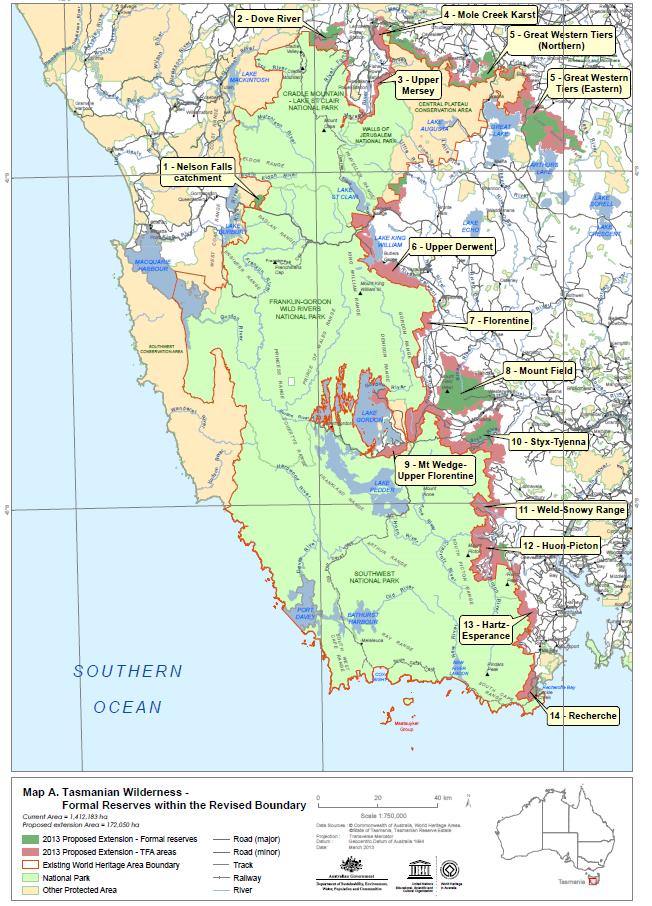A DECISION made in Cambodia this month by the United Nation’s World Heritage committee could add 172,000 hectares of forest to the Tasmanian Wilderness World Heritage Area. Federal Minister for the Environment Tony Burke was seeking to have the deal sealed without proper scrutiny, in particular by using a loophole in the UN guidelines to label it as a “minor” modification. But this plan to rush through the extension in support of the Tasmanian forest peace deal hit a major hurdle when a key UN adviser, the International Council on Monuments and Sites (ICOMOS) recently rejected the proposal as ‘minor’ and recommended that the nomination be ‘referred back’ to Australia to enable full and proper consultation.
The draft decision is at: http://whc.unesco.org/archive/2013/whc13-37com-8B-Add-en.pdf
But what the final outcome will be is unclear. It is understood that the Australian government and the environmental NGO’s will be sending delegations to lobby individual committee members to overturn the recommendation to ‘refer back’ the nomination.
[Read more…] about Undemocratic Politics Again Determines Land Use in Tasmania: An Update





 Jennifer Marohasy BSc PhD has worked in industry and government. She is currently researching a novel technique for long-range weather forecasting funded by the B. Macfie Family Foundation.
Jennifer Marohasy BSc PhD has worked in industry and government. She is currently researching a novel technique for long-range weather forecasting funded by the B. Macfie Family Foundation.